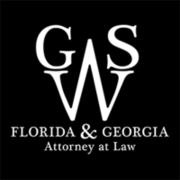
Syfert Injury Law Firm
Your Trusted Partner in Personal Injury & Workers' Compensation
Call Now: 904-383-7448
Your Trusted Partner in Personal Injury & Workers' Compensation
Call Now: 904-383-7448(Ga. L. 1970, p. 168, § 2; Ga. L. 2013, p. 759, § 1/HB 94.)
- For article distinguishing loss of capacity to work with loss of earning capacity, see 23 Ga. B. J. 213 (1960). For article discussing the use of mortality tables in determining the value of life earnings of the deceased in wrongful death actions, with emphasis on the Carlisle table, see 9 Ga. St. B. J. 293 (1973). For article, "Problems in Calculating and Awarding Compensatory Damages for Wrongful Death Under the Federal Tort Claims Act," see 36 Emory L.J. 149 (1987). For article, "Damage Calibrations Under the Federal Tort Claims Act," see 25 Ga. St. B. J. 100 (1988). For article, "The Discount Rate in Georgia Personal Injury and Wrongful Death Damage Calculations," see 13 Ga. St. U.L. Rev. 431 (1997). For article, "Calculating Economic Damages in Georgia Personal Injury and Wrongful Death Cases," see 22 Ga. St. Bar. J. 18 (Feb. 2017).
- O.C.G.A. § 51-12-13 applies to actions in tort, but not to the issue of just and adequate compensation in a condemnation action. Chouinard v. City of E. Point, 237 Ga. App. 266, 514 S.E.2d 220 (1999).
- While a jury might be authorized to find that the decedent had a life expectancy of ten years longer than that set out in Carlisle's Mortality Table, the evidence did not authorize the finding that the decedent's income or potential would average $6,600.00 per year during that life expectancy, where the evidence showed that the decedent's earnings had dropped in the last several years to $1,200 per year. Swift & Co. v. Lawson, 95 Ga. App. 35, 97 S.E.2d 168 (1957).
- Admission of testimony of an annuity expert, in a medical malpractice action, to establish how the plaintiff might profitably invest the money the plaintiff had already received from a settlement with former co-defendants was harmless error since the jury found the defendant was not liable and the error did not affect the verdict. Barnes v. Wall, 201 Ga. App. 228, 411 S.E.2d 270 (1991).
Cited in Miller v. Tuten, 137 Ga. App. 188, 223 S.E.2d 237 (1976); Piggly-Wiggly S., Inc. v. Tucker, 139 Ga. App. 873, 229 S.E.2d 804 (1976); Williams v. Adams, 170 Ga. App. 35, 316 S.E.2d 1 (1984); Gusky v. Candler Gen. Hosp., 192 Ga. App. 521, 385 S.E.2d 698 (1989); Meader ex rel. Long v. United States, 881 F.2d 1056 (11th Cir. 1989); CSX Transp., Inc. v. Barnett, 199 Ga. App. 611, 405 S.E.2d 506 (1991); Childs v. United States, 923 F. Supp. 1570 (S.D. Ga. 1996).
- 22 Am Jur. 2d, Damages, § 174 et seq.
- Duty to instruct, and effect of failure to instruct, jury as to reduction to present worth of damages for future loss on account of death or personal injury, 77 A.L.R. 143.
Cost of annuity as a factor for consideration in fixing damages in personal injury or death action, 53 A.L.R.2d 1454.
Admissibility in wrongful death action of testimony of actuary or mathematician for purpose of establishing present worth of pecuniary loss, 79 A.L.R.2d 259.
Admissibility of testimony of actuary or mathematician as to present value of loss or impairment of injured person's general earning capacity, 79 A.L.R.2d 275.
Sufficiency of evidence, in personal injury action, to prove impairment of earning capacity and to warrant instructions to jury thereon, 18 A.L.R.3d 88.
Excessiveness or adequacy of damages awarded for injuries to head or brain, or for mental or nervous disorders, 14 A.L.R.4th 328.
Excessiveness or adequacy of damages awarded for injuries to, or conditions induced in, circulatory, digestive, and glandular systems, 14 A.L.R.4th 539.
Excessiveness or adequacy of damages awarded for injuries to head or brain, 50 A.L.R.5th 1.
Excessiveness or adequacy of damages awarded for injuries to nerves or nervous system, 51 A.L.R.5th 467.
Warning: 'results' key not found in API response
No results found for Georgia Code 51-12-13.